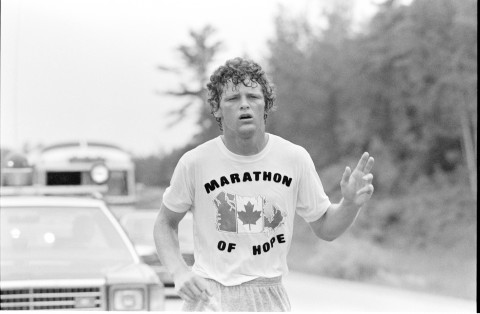Photo: Fleur-Ange Lamothe
After writing a blog for the Chilly Half Marathon, I was hoping to have an exciting post-race report.
Unfortunately, it’s not the case.
Going into Sunday’s race, my training proved I was fit. The mileage was appropriate and I was hitting workouts close to when I ran my PB of 1:10:52 in 2013. The time to beat to make the World Half Marathon team was 1:13:13 and I knew it was within my capabilities. I ran 1:14 earlier this year in January and training had only improved since then. Other than a slow 1:16 in February in Vancouver due to inclement weather, I was confident that I could get the job done. Then I got sick. Now, I’m not new to this sport and know that when one gets sick or injured, it can be an indication that you are in too deep. You push your body to the limit but sometimes it fights back, telling you to take it down a notch.
Enter the Marathon Mom explanation.
Feel free to quit reading if my parenting talk exhausts you. That’s fine with me. Or, think about everything your mom did for you as a child—I am no different.
For reasons I don’t feel necessary to explain, I have not slept well for the past two months due to being up in the night multiple times for multiple reasons with multiple kids (and at times, the dog!). It’s been exhausting. Five days before the race I had that trickle in the throat that hinted something was up. I continued with my normal routine, tapering for Sunday’s race, having solid afternoon naps, eating well, drinking plenty of fluids, and getting to bed at a decent time. I even slept in our basement with earplugs for the two nights before the race.
But it wasn’t enough.
I thought I was fighting this nasty virus that was going around, and went into the race refusing to make it known because a) I was denying it myself and b) I was proud and didn’t want people to think I was giving an excuse for a bad race before even starting. The two indicators that proved I was sicker than I thought were that my resting heart rate was high, averaging about 39 all week. Normally it would be in the mid-30’s. (My RHR tells me lot about myself). Also, due to my pounding headache, I took something for it the night before the race. The last time I took any sort of pill for pain was two years ago when I had my stress fracture. That tells you something.
Race morning was uneventful; everything was routine and going well. The weather was perfect and my legs were fresh. I was close to target at 5 km, but as the race progressed, I slowed. I felt like my effort was there, but I just didn’t have the pop or the numbers to prove it. At some point in the race I started to think about my B goals. I still had my time from last year that might earn me a spot on the team, and I still wanted the win. Then at 17 km, Leslie Sexton made her move. She’s training for Rotterdam and had the steady-pacing rhythm nailed perfectly. Her coach rode past me on his bike and my body just didn’t respond. She gained a decent distance from me and secured the win. After crossing the line, I was pretty upset. I congratulated Leslie. She’s a solid runner, starting to make her mark. Normally I’d stick around for pictures and the like, but this time I just wanted to change my shoes, do my cool down, and have a good cry.
Upon finishing, my head was pounding and fellow Saucony runner and masters champ, Predrag came to the rescue when his wife found me an Advil. He was also there for me when I broke my leg, two years ago. I was so desperate that I swallowed the pill dry before heading out for my cool down. Once I returned I found a quiet corner and let the tears flow with Coach Rick and Josie. I’ve had my share of letdowns, but this one stung. As a mom, you hear every cough, sniffle, sneeze, cry, moan, shriek, sigh, door close/open, toilet flush, and faucet run in the middle of the night. It’s not something you can easily turn off. When my kids need me, they need me. My husband’s an incredible dad who works hard to provide for us, but when his head hits the hay, he hears nothing.
My tears were flowing because even though I’ve learned to be better at saying no more than yes this year in order to put everything into my Olympic year, I struggle. Making sacrifices is one thing. But trying to be a princess with perfect sleep, rest, nutrition, training and preventative maintenance and etcetera is another.
It’s tough, incredibly tough.
In a few days the announcement will be made for the World Half Marathon team and I will not be on the list. Running the Around the Bay 30 km race was always the alternative so that’s the plan now. I have a bit more time to get over this cold, do some decent workouts, and run one of my favourite courses. I’ve done it several times and it will be an excellent way to prove my fitness for Rio, and end my winter/spring season. I was looking up some verses on disappointment to help encourage me and remembered my own words: “God’s plan is better than mine.”
Onward I go.













 Our Magazine
Our Magazine
